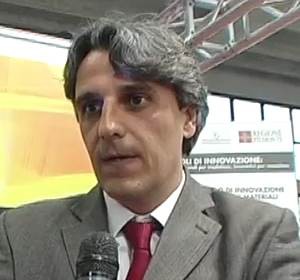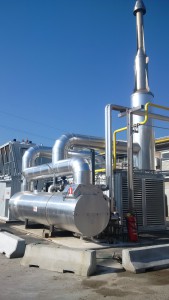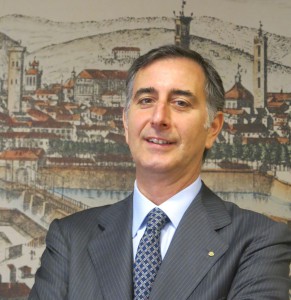Combined heat and power generation (cogeneration) remains the ideal solution for the energy and thermal power balance of paper mills. The Italian example of an entrepreneur who opted for a different installation and a different service.
Bartoli produces special cardboard for the paper industry, with special reference to cardboard folders for the stationary sector and fibrous cardboard packagings for the footwear sector. As with all paper producers, energy is one of the largest items of expenditure for Bartoli. This cost, which is per se already very high for energy intensive businesses, becomes a continuous drain on companies’ resource in Italy, as it represents on average one third of paper mills’ total expenditure.
In order to optimize electric and thermal energy consumption, last year Bartoli approved the construction of a combined heat and power generation plant at its factory in Lucca, Tuscany.
This measure will lead to economic savings, as well as to a lower environmental impact, limiting the use of energy derived from fossil fuels, and consequently to the reduction of greenhouse gas emissions.
The container solution
The implementation of the project was entrusted to the multinational AB, a company based in Orzinuovi in the province of Brescia (Italy) which is specialized in the design and building of combined heat and power generation plants.

«Combined heat and power generation plants for the paper industry must be “tailored” upon the specific needs of the customer», explains AB Sales Manager Andrea Magioncalda. «The proposed solution is the result of a thorough study of the thermal and electric needs of the production plant. In this case, the study led to the need to install an Ecomax 14 HE cogeneration module, which has turned out to be the perfect balance between the energy carriers used by Bartoli and ensure a nominal power of 1,653 thermal kW and 1,487 electric kW. Once the right size for the cogeneration plant was identified, our engineering department integrated and interfaced the module with the mechanical, electrical and software installations already existing in our plant».
The plant has an endothermic motor with an eight cycle injection system, fuelled with methane and coupled with a synchronous generator. Produced by AB with GE Jenbacher technology, the system is made up of engine and auxiliary modules. The engine module accommodates the connection between motor and alternator and is equipped with a suction box that allows the inlet of air from the alternator side and its outlet from the other side, thereby providing for the constant ventilation of the module and avoiding that methane pockets are formed inside the module. The auxiliary module accommodates the medium voltage boards, the low voltage/medium voltage step-up transformer and the maintenance box. The thermal energy produced that has not been absorbed is finally dissipated by means of emergency electroradiators placed on the roof of the container.
The system central module finally features the steam production generator, which recovers the heat contained in the productive cycle exhaust gases, and the lubricating oil refill system with two tanks of 1.1 m3 capacity each, for new and exhaust oil.
Reduced environmental impact is undoubtedly one of the benefits brought about by the combined heat and power generation plant. This is due to the inevitable more limited use of energy from fossil fuels, as well as to the technology of the same installation. AB explains that the endothermic motor is equipped with the Leanox combustion regulation system by GE Jenbacher, which makes it possible to reduce NOX emissions by automatically regulating the air-fuel ratio. The exhaust gas produced by the installation is basically sent to an oxidizing catalyst, which before releasing fumes in the atmosphere reduces their carbon oxide (CO) and unburnt hydrocarbons (HC) content.
Expected efficiency
As already mentioned, besides producing 1,487 kWe during full-load operation that are used for the functioning of installations and to meet the other energy needs of the paper mill, the cogeneration system also enables to recover the heat energy produced as hot water and steam. The first stage of thermal recovery is inside the engine circuit and enables to recover about 887 kWt as hot water at about 90 °C, which is then consumed by the plant itself. The heat resulting from the engine cooling process is recovered during a second stage, which leads to the production of hot water at about 43 °C for approximately 162 kWt power.
Finally, additional 604 kWt are recovered from the exhaust gases of the engine block in the form of saturated steam at 3 bar and about 144 °C. Heat recovery is possible thanks to the use of a tube heat exchanger and like hot water the same steam produced in this way is consumed inside the plant.
Technicians provided estimates of the installation performance since the very beginning of the project. With the installation expected to operate for about 8 thousand hours per year with 100% nominal electric load, as only surplus energy is sold to the national electricity grid, technicians calculated a yearly net electricity production of nearly 11.7 million kWh with over 13 million kWh thermal energy recovered compared to a natural gas consumption for the same installation of about 28.5 million kWh. On balance, with the company being able to achieve a Pes (primary energy saving) higher than 10% compared to separate production in compliance with the legal parameters established for installations with power values higher than MWe, the Lucca plant can be considered a highly-efficient cogeneration unit.

Current and future advantages
The installation was started in December 2014. «This was the culmination of long and accurate work. The entire intervention was integrated in the paper mill normal activities and has made it possible to come to the installation start and final test smoothly and without any problems. The introduction of the cogeneration group did not slow down or interfere with the normal production cycle of the company». Mr. Magioncalda namely explains that within few weeks the installation and blank tests were performed in full compliance with the defined timing and with a perfect coordination between AB workers on the field and the staff of the headquarters. «Furthermore, the close collaboration between our team and the Bartoli employees enabled to technically prepare, indirectly, for the following running and management of the installation». Besides, AB provides for the maintenance of the installation during its entire lifecycle through AB Service.
Only in the next few months will it be possible to quantify advantages, however one can say that the initial objective has been undoubtedly achieved. After all, «the current processing costs that the Italian paper companies have to bear, compared to its international competitors, force Italian paper mills to carry out very detailed energy evaluations». On top of this, one should furthermore consider the success achieved by the Lucca company is twofold, i.e. «reducing energy costs by enhancing competitiveness to take on a leading role on world markets, and savings in terms of reduced emissions, whereby all of this is accomplished by continuing to produce very high-quality products».
Mr. Magioncalda concludes by saying that in the future «the optimization of processing costs will not only enable the company to keep operating costs under control, but it will also make it possible to plan further and more ambitious investment plans».
Interview with Bartoli’s sole administrator Giorgio Bartoli
This kind of investment implies considerable efforts in terms of economic resources and time; what was the timing and what is your expected payback time?

«The installation was finished within the defined timing and without any problems. The administrative phase was the longest; it took us about six months to obtain an authorization from the Lucca Province Authorities. After the authorization, the work was completed in just 75 days: the installation was delivered at the end of September 2014 and its official start-up took place on 10th December. Settings were defined in the following two weeks until 23rd December, when we obtained the official authorization for the plant to start operating. This was a major investment for us, with 1.6 million Euros resources invested in total. The expected payback time is maximum 4 years».
What induced you to opt for the AB solution?
«For some time now I have considered not only products, but also companies. This is a sales policy I personally apply when I approach my customers, and it is at the same time the same approach adopted by AB. The feedback we got was undoubtedly very good, as we found a young, dynamic, very efficient and above all professional company. Furthermore, AB can provide a complete service: delivery, assembly, service and after sales, all of which managed directly by them. This full coverage, together with the technical validity of their installation, was the most important factor for us to decide to choose them.
Advantages can of course be analysed only in a few months from now, yet we immediately noticed that no more energy micro-failures occurred, whereby the same energy failures had represented a major problem to the paper mill continuous production cycle before. From an economic viewpoint, the first benefit we had was the reduction of the A3 entry on our energy bill».
Why is cogeneration the ideal solution for the paper industry?
«Because paper mills have a perfect energy balance for this type of installations. On top of this, one should also consider the environmental component, which we immediately made use of to our benefit also because the final users of our products, i.e. the big names in the fields of fashion and footwear, pay special attention to the environmental impact of their suppliers. Furthermore, the economic savings obtained thanks to the cogeneration plant will enable us to make new investments and propose ourselves on the new international markets where we wish to be competitive».
Technical date of the Ecomax 14 HE installation at Bartoli
| Natural gas lower calorific value (LCV) | 9.5 kWh/Nm3 |
| Natural gas consumption | 376 Nm3/h |
| Input power | 3,569 kW |
| Mechanical power supplied | 1,527 kWe |
| Electric power supplied | 1,487 kWe |
| Recoverable heat power | 1,653 kWt |
| Electric efficiency | 41.7% |
| Heat efficiency | 46.6% |
| Overall efficiency | 88.3% |

[…] have been used widely as an additive in lithium- ion batteries, as conductive coatings, as electrical and thermal conductive composites, in chemical and bio sensors, […]
Comments are closed.